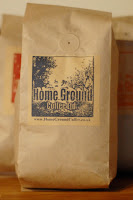Engineered Wood Renovating
As
some of you may know, we’re currently working on renovating our home and we’ve
decided to make a start on the lounge. We live in a 1960’s bungalow and
although the renovation has been a bit slow to start with, it’s now firmly
underway.. starting with the very foundation; the floor. At the moment our
lounge is currently harbouring an old fashioned carpet, which wouldn’t be so
bad if it wasn’t for the French doors that take you straight through to the
garden; resulting in mud and general wear and tear. Yes, it’s safe to say that
our carpet has certainly seen better days, which is why we’ve opted for
something a little more modern and durable. Lets talk about engineered
wood flooring shall we?
As
a busy Mum of two lively boys, as well as being the proud owner of 2 dogs, 2
cats and 1 overgrown husband it was really important to me that our new floor
was able to take the brunt of family life. Which is why we’ve opted for
engineered wood when it’s come to our floor.
I
love my lounge and with a new floor I really think that it will have a whole
new lease of life, especially in the way that the wood will bring out different
characteristics such as our brick fireplace. When it came to making a decision
on the material we were going to opt for to use on the floor there were a few
front runners but after looking into engineered wood it seemed like the best
choice for us.
So
what is engineered wood? Well, it was something that I’d heard of but never
really looked into until now! As the name suggests, engineered wood is a type
of wood flooring that is composed of anything from from 3 and 12 layers of man
made wood (ply etc). It is then topped with a layer of real hardwood, which is
what gives it an overall stunning appearance - similar to solid wood. The great
thing about engineered flooring is that it looks just like real wood but comes
with a much friendlier price tag! It also has many benefits that solid wood
doesn’t have too, one of them being the stability that runs through the board
due to the layers that make it. What this means is that unlike solid wood,
engineered wood is more resistant to changes in temperature and humidity which
means it can even be installed in kitchen/dining areas. As mentioned earlier,
engineered wood bears a strong resemblance to solid wood but comes at a
fraction of the price. This is because the top layer is actually made from real
wood and most people probably wouldn’t question the authenticity of your floor
if they don’t know the difference between solid and engineered floors
themselves.
Although
we don’t have underfloor heating (yet!) it is also great to know that should we
consider it , engineered flooring works perfectly over the top of it. However
if we had a solid wood floor this would not be the case as the two are anything
but compatible. It has also been said that engineered wood is more
environmentally friendly than solid wood floors, this is probably due to the
amount of real wood used in an engineered wood floor being significantly less
than that used in solid boards. However it isn’t all doom and gloom for solid
wood floors, it turns out that they can be sanded and refinished more than
engineered floors can be. This is due to with the wear layer but it doesn’t
mean to say that engineered flooring can’t be sanded and refinished - just not
as much.
Whichever
way you look at it, I feel like we’ve picked an absolute winner with engineered
flooring! Their ability to withstand heavy use and footfall in a busy home will
hopefully result in them lasting many years and I just can’t wait to see the
finished product when it’s installed. Keep an eye out for further living room
updates!




Comments
Post a Comment